The NVIDIA GeForce GTX Titan X Review
by Ryan Smith on March 17, 2015 3:00 PM ESTMeet The GeForce GTX Titan X
Now that we’ve had a chance to look at the GM200 GPU at the heart of GTX Titan X, let’s take a look at the card itself.
From a design standpoint NVIDIA put together a very strong card with the original GTX Titan, combining a revised, magnesium-less version of their all-metal shroud with a high performance blower and vapor chamber assembly. The end result was a high performance 250W card that was quieter than some open-air cards, much quieter than a bunch of other blowers, and shiny to look at to boot. This design was further carried forward for the reference GTX 780 series, its stylings copied for the GTX Titan Z, and used with a cheaper cooling apparatus for the reference GTX 980.
For GTX Titan X, NVIDIA has opted to leave well enough alone, having made virtually no changes to the shroud or cooling apparatus. And truth be told it’s hard to fault NVIDIA right now, as this design remains the gold (well, aluminum) standard for a blower. Looks aside, after years of blowers that rattled, or were too loud, or didn’t cool discrete components very well, NVIDIA is sitting on a very solid design that I’m not really sure how anyone would top (but I’d love to see them try).
In any case, our favorite metal shroud is back once again. Composed of a cast aluminum housing and held together using a combination of rivets and screws, it’s as physically solid a shroud as we’ve ever seen. Meanwhile having already done a partial black dye job for GTX Titan Black and GTX 780 Ti – using black lettering a black-tinted polycarbonate window – NVIDIA has more or less completed the dye job by making the metal shroud itself almost completely black. What remains are aluminum accents and the Titan lettering (Titan, not Titan X, curiously enough) being unpainted aluminum as well. The card measures 10.5” long overall, which at this point is NVIDIA’s standard size for high-end GTX cards.
Drilling down we have the card’s primary cooling apparatus, composed of a nickel-tipped wedge-shaped heatsink and ringed radial fan. The heatsink itself is attached to the GPU via a copper vapor chamber, something that has been exclusive to GTX 780/Titan cards and provides the best possible heat transfer between the GPU and heatsink. Meanwhile the rest of the card is covered with a black aluminum baseplate, providing basic heatsink functionality for the VRMs and other components while also protecting them.
Finally at the bottom of the stack we have the card itself, complete with the GM200 GPU, VRAM chips, and various discrete components. Unlike the shroud and cooler, GM200’s PCB isn’t a complete carry-over from GK110, but it is none the less very similar with only a handful of changes made. This means we’re looking at the GPU and VRAM chips towards the front of the card, while the VRMs and other discrete components occupy the back. New specifically to GTX Titan X, NVIDIA has done some minor reworking to improve airflow to the discrete components and reduce temperatures, along with employing molded inductors.
As with GK110, NVIDIA still employs a 6+2 phase VRM design, with 6 phases for the GPU and another 2 for the VRAM. This means that GTX Titan X has a bit of power delivery headroom – NVIDIA allows the power limit to be increased by 10% to 275W – but hardcore overclockers will find that there isn’t an extreme amount of additional headroom to play with. Based on our sample the actual shipping voltage at the max boost clock is fairly low at 1.162v, so in non-TDP constrained scenarios there is some additional headroom through overvolting, up to 1.237v in the case of our sample.
In terms of overall design, the need to house 24 VRAM chips to get 12GB of VRAM means that the GTX Titan X has chips on the front as well as the back. Unlike the GTX 980 then, for this reason NVIDIA is once again back to skipping the backplate, leaving the back side of the card bare just as with the previous GTX Titan cards.
Moving on, in accordance with GTX Titan X’s 250W TDP and the reuse of the GTX Titan cooler, power delivery for the GTX Titan X is identical to its predecessors. This means a 6-pin and an 8-pin power connector at the top of the card, to provide up to 225W, with the final 75W coming from the PCIe slot. Interestingly the board does have another 8-pin PCIe connector position facing the rear of the card, but that goes unused for this specific GM200 card.
Meanwhile display I/O follows the same configuration we saw on GTX 980. This is 1x DL-DVI-I, 3x DisplayPort 1.2, and 1x HDMI 2.0, with a total limit of 4 displays. In the case of GTX Titan the DVI port is somewhat antiquated at this point – the card is generally overpowered for the relatively low maximum resolutions of DL-DVI – but on the other hand the HDMI 2.0 port is actually going to be of some value here since it means GTX Titan X can drive a 4K TV. Meanwhile if you have money to spare and need to drive more than a single 4K display, GTX Titan X also features a pair of SLI connectors for even more power.
In fact 4K will be a repeating theme for GTX Titan X, as this is one of the primary markets/use cases NVIDIA will be going after with the card. With GTX 980 generally good up to 2560x1440, the even more powerful GTX Titan X is best suited for 4K and VR, the two areas where GTX 980 came up short. In the case of 4K even a single GTX Titan X is going to struggle at times – we’re not at 60fps at 4K with a single GPU quite yet – but GTX Titan should be good enough for framerates between 30fps and 60fps at high quality settings. To fill the rest of the gap NVIDIA is also going to be promoting 4Kp60 G-Sync monitors alongside the GTX Titan X, as the 30-60fps range is where G-sync excels. And while G-sync can’t make up for lost frames it can take some of the bite out of sub-60fps framerates, making it a smoother/cleaner experience than it would otherwise be.
Longer term NVIDIA also sees the GTX Titan X as their most potent card for VR headsets., and they made sure that GTX Titan X was on the showfloor for GDC to drive a few of the major VR demos. Certainly VR will take just about whatever rendering power you can throw at it, if only in the name of reducing rendering latency. But overall we’re still very early in the game, especially with commercial VR headsets still being in development.
Finally, speaking of the long term, I wanted to hit upon the subject of the GTX Titan X’s 12GB of VRAM. With most other Maxwell cards already using 4Gb VRAM chips, the inclusion of 12GB of VRAM in NVIDIA’s flagship card was practically a given, especially since it doubles the 6GB of VRAM the original GTX Titan came with. At the same time however I’m curious to see just how long it takes for games to grow into this space. The original GTX Titan was fortunate enough to come out with 6GB right before the current-generation consoles launched, and with them their 8GB memory configurations, leading to a rather sudden jump in VRAM requirements that the GTX Titan was well positioned to handle. Much like 6GB in 2013, 12GB is overkill in 2015, but unlike the original GTX Titan I suspect 12GB will remain overkill for a much longer period of time, especially without a significant technology bump like the consoles to drive up VRAM requirements.


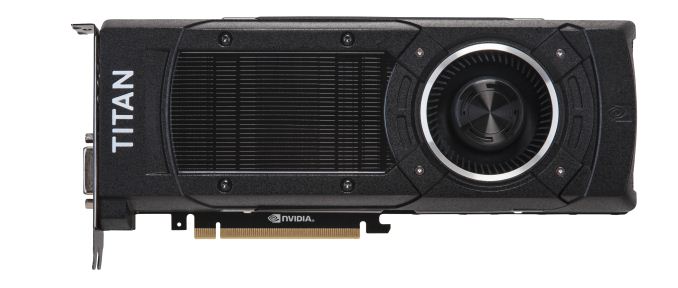
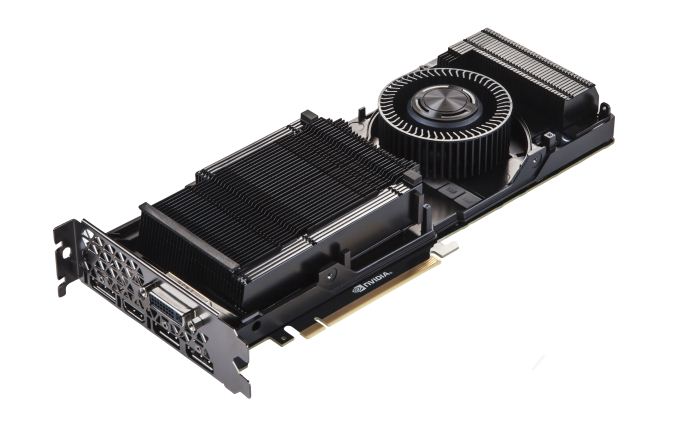
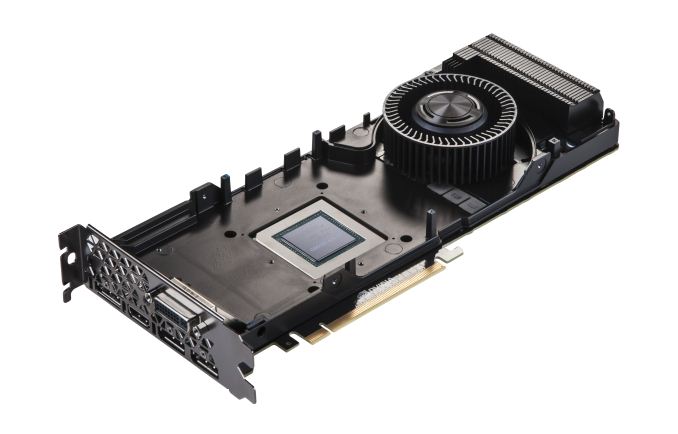
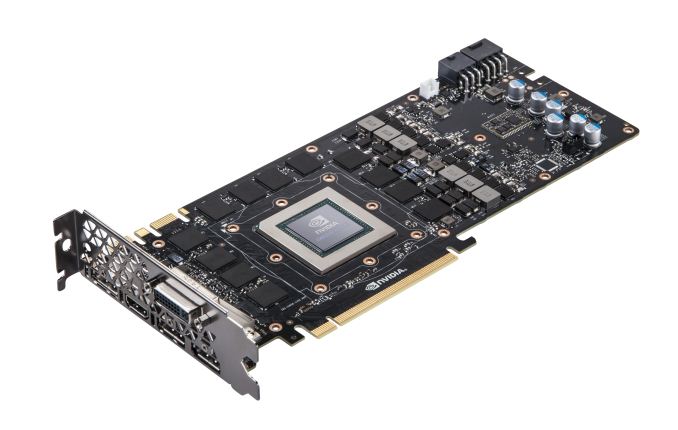
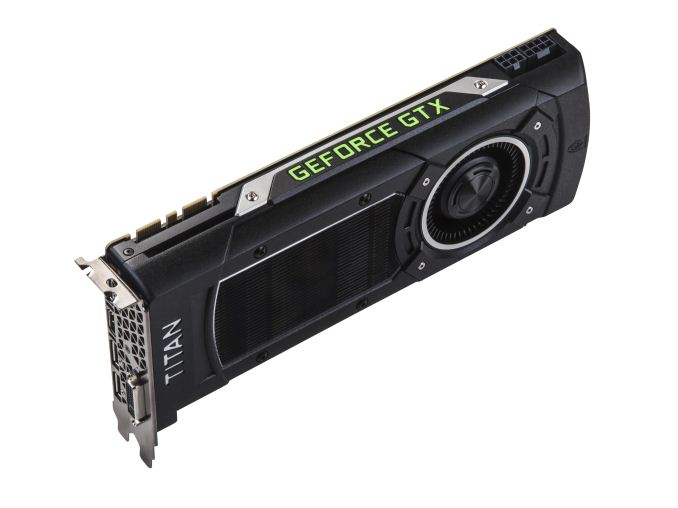
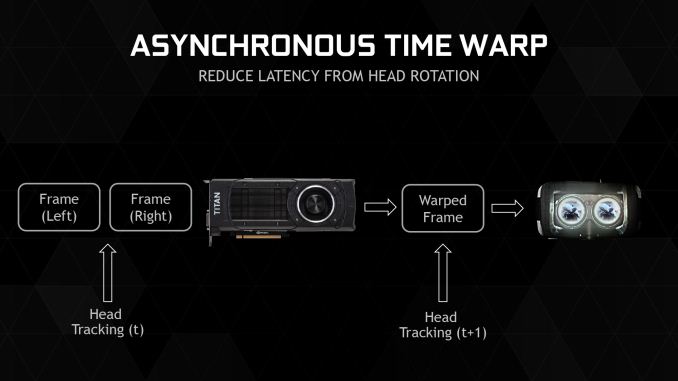








276 Comments
View All Comments
Kevin G - Wednesday, March 18, 2015 - link
There was indeed a bigger chip due closer to the GK104/GTX 680's launch: the GK100. However it was cancelled due to bugs in the design. A fixed revision eventually became the GK110 which was ultimately released as the Titan/GTX 780.After that there have been two more revisions. The GK110B is quick respin which all fully enabled dies stem from (Titan Black/GTX 780 Ti). Then late last nVidia surprised everyone with the GK210 which has a handful of minor architectural improvements (larger register files etc.).
The morale of the story is that building large dies is hard and takes lots of time to get right.
chizow - Monday, March 23, 2015 - link
We don't know what happened to GK100, it is certainly possible as I've guessed aloud numerous times that AMD's 7970 and overall lackluster pricing/performance afforded Nvidia the opportunity to scrap GK100 and respin it to GK110 while trotting GK104 out as its flagship, because it was close enough to AMD's best and GK100 may have had problems as you described. All of that led to considerable doubt whether or not we would see a big Kepler, a sentiment that was even dishonestly echoed by some Nvidia employees I got into it with on their forums.Only in October 2012 did we see signs of Big Kepler in the Titan supercomputer with K20X, but still no sign of a GeForce card. Its no doubt that a big die takes time, but Nvidia had always led with their big chip first, since G80 and this was the first time they deviated from that strategy while parading what was clearly their 2nd best, mid-range performance ASIC as flagship.
Titan X sheds all that nonsense and goes back to their gaming roots. It is their best effort, up front, no BS. 8Bn transistors Inspired by Gamers and Made by Nvidia. So as someone who buys GeForce for gaming first and foremost, I'm going to reward them for those efforts so they keep rewarding me with future cards of this kind. :)
Railgun - Wednesday, March 18, 2015 - link
With regards to the price, 12GB of RAM isn't justification enough for it. Memory isn't THAT expensive in the grand scheme of things. What the Titan was originally isn't what the Titan X is now. They can't be seen as the same lineage. If you want to say memory is the key, the original Titan with its 6GB could be seen as more than still relevant today. Crysis is 45% faster in 4K with the X than the original. Is that the chip itself or memory helping? I vote the former given the 690 is 30% faster in 4K with the same game than the original Titan, with only 4GB total memory. VRAM isn't going to really be relevant for a bit other than those that are running stupidly large spans. It's a shame as Ryan touches on VRAM usage in Middle Earth, but doesn't actually indicate what's being used. There too, the 780Ti beats the original Titan sans huge VRAM reserves. Granted, barely, but point being is that VRAM isn't the reason. This won't be relevant for a bit I think.You can't compare an aftermarket price to how an OEM prices their products. The top tier card other than the TiX is the 980, which has been mentioned ad nauseam that the TiX is NOT worth 80% more given its performance. If EVGA wants to OC a card out of their shop and charge 45% more than a stock clock card, then buyer beware if it's not a 45% gain in performance. I for one don't see the benefit of a card like that. The convenience isn't there given the tools and community support for OCing something one's self.
I too game on 25x14 and there've been zero issues regarding VRAM, or the lack thereof.
chizow - Monday, March 23, 2015 - link
I didn't say VRAM was the only reason, I said it was one of the reasons. The bigger reason for me is that it is the FULL BOAT GM200 front and center. No waiting. No cut cores. No cut SMs for compute. No cut down part because of TDP. It's 100% of it up front, 100% of it for gaming. I'm sold and onboard until Pascal. That really is the key factor, who wants to wait for unknown commodities and timelines if you know this will set you within +/-10% of the next fastest part's performance if you can guarantee you get it today for maybe a 25-30% premium? I guess it really depends on how much you value your current and near-future gaming experience. I knew from the day I got my ROG Swift (with 2x670 SLI) I would need more to drive it. 980 was a bit of a sidegrade in absolute performance and I still knew i needed more perf, and now I have it with Titan X.As for VRAM, 12GB is certainly overkill today, but I'd say 6GB isn't going to be enough soon enough. Games are already pushing 4GB (SoM, FC4, AC:U) and that's still with last-gen type textures. Once you start getting console ports with PC texture packs I could see 6 and 8GB being pushed quite easily, as that is the target framebuffer for consoles (2+6). So yes, while 12GB may be too much, 6GB probably isn't enough, especially once you start looking at 4K and Surround.
Again, if you don't think the price is worth it over a 980 that's fine and fair, but the reality of it is, if you want better single-GPU performance there is no alternative. A 2nd 980 for SLI is certainly an option, but for my purposes and my resolution, I would prefer to stick to a single-card solution if possible, which is why I went with a Titan X and will be selling my 980 instead of picking up a 2nd one as I originally intended.
Best part about Titan X is it gives another choice and a target level of performance for everyone else!
Frenetic Pony - Tuesday, March 17, 2015 - link
They could've halved the ram, dropped the price by $200, and done a lot better without much to any performance hit.Denithor - Wednesday, March 18, 2015 - link
LOL.You just described the GTX 980 Ti, which will likely launch within a few months to answer the 390X.
chizow - Wednesday, March 18, 2015 - link
@Frenetic Pony, maybe now, but what about once DX12 drops and games are pushing over 6GB? We already see games saturating 4GB, and we still haven't seen next-gen engine games like UE4. Why compromise for a few hundred less? You haven't seen all the complaints from 780Ti users about how 3GB isn't enough anymore? Shoudn't be a problem for this card, which is just 1 less thing to worry about.LukaP - Thursday, March 19, 2015 - link
Games dont push 4GB... Check the LTT Ultrawide video, where he barely got Shadow of Mordor on ultra to go past 4GBs on 3 ulrawide 1440p screens.And as a game dev i can tell you, with proper optimisations, more than 4GB is insane, on a GPU, unless you just load stuff in with a predictive algorithm, to avoid PCIe bottlenecks.
And please do show me where a 780Ti user isnt happy with his cards performance at 1080-1600p. Because the card does, and will continue to perform great on those resolutions, since games wont really advance, due to consoles limiting again.
LukaP - Thursday, March 19, 2015 - link
Also, DX12 wont make games magically use more VRAM. all it really does is it makes the CPU and GPU communicate better. It wont magically make games run or look better. both of those are up to the devs, and the look better part is certainly not the textures or polycounts. Its merely the amount of drawcalls per frame going up, meaning more UNIQUE objects. (contrary to more objects, which can be achieved through instancing easily in any modern engine, but Ubisoft havent learned that yet)chizow - Monday, March 23, 2015 - link
DX12 raises the bar for all games by enabling better visuals, you're going to get better top-end visuals across the board. Certainly you don't think UE4 when it debuts will have the same reqs as DX11 based games on UE3?Even if you have the same size textures as before 2K or 4K assets as is common now, the fact you are drawing more polygons enabled by DX12's lower overhead, higher draw call/poly capabilities means they need to be textured, meaning higher VRAM requirement unless you are using the same textures over and over again.
Also, since you are a game dev, you would also know Devs are going more and more towards bindless or megatextures that specifically make great use of textures staying resident in local VRAM for faster accesses, rather than having to optimize and cache/load/discharge them.